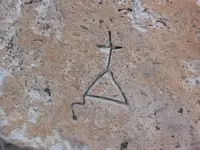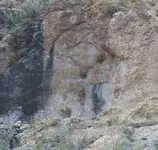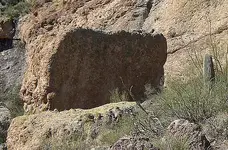An interesting post by Quinoa from another thread on TNet, dealing with ownership of mining properties in early Mexico and the Crown's means of taxing their proceeds:
The king's fifth dealt with silver. This is from a pdf file by John Lacy titled, The Historic Origins of the U.S. Mining Laws and Proposals for Change:
"... As the Spanish kingdoms developed out of the ruins of the Roman empire, the first private rights to minerals were defined by the so-called Alcalá de Henares promulgated in 1348 by Alfonso the Just (Alfonso XI) of Castile and Leon and a decree of Juan I of Aragon in 1387. John A. Rockwell, A Compilation of Spanish and Mexican Law in Relationship to Mines and Titles to real Estate, 112-13 (1851). These laws proclaimed that all minerals belonged to the Crown but could be worked under a special license.
The opportunities of the New World substantially changed the picture and, in 1526, spurred by discoveries at Taxco and Jalisco in New Spain, the Crown permitted local governments to grant the permission required to exploit mineral deposits. Based on this authority, don Antonio de Mendoza, New Spain’s first viceroy, issued a comprehensive mining code in 1550 adopting Saxon and English (i.e., Celtic) concepts of discovery, self initiation of rights, and maintenance work required to maintain claims. The popular concepts of Viceroy Mendoza’s code were eventually absorbed into law when on August 22, 1584, Philip II promulgated the Ordenanzas del Nuevo Cuaderno (referred to as the ‘new ordinances’), which was the first comprehensive mining code applicable to most of the Spanish Empire.
The new ordinances contained a remarkably broad grant of rights that granted to the discoverer the right to work mines as their own possession and property…observing both in regard to what they have to pay us [the Crown] by way of duty, and all other respects, the regulations and arrangements, ordered by this edict… Ordenanzas del Nuevo Cuaderno - codified as Law 9, Title 13, Book 6, Recopilacion de las Leyes de Estos Reynos (de Castilla), 1640.
This right has been characterized as ‘direct and beneficial grant of property; and is to be regarded as a qualified gift.’ Under the new ordinances, after making a discovery, a miner had twenty days within which to register the find with a mining justice, or in his absence, the local alcalde. The size of the discovery claim was 160 varas by 80 varas (a Castillian is approximately 32 inches) and could be situated either along or across the vein. The discoverer was not limited in the number of claims that could be staked on the same lode, but all subsequent claimants after an initial discovery were limited to two claims of 120 varas by 60 varas, each of which had to have three claims between them. Claims were required to be perfected through the sinking of a trial pit three estados deep (approximately fourteen feet) within three months of the original date of registration. Very clear work obligations also continued to be imposed by the new ordinances, which required the owners of a mine to keep four people working at all times. If the work was not performed for a four-month continuous period, the mine would be forfeited. In such a case, the owner would be required to file a new registration, but the mine also became subject to denunciation (that is, initiation of adverse rights) by third parties.
The royalty rate, although colloquially referred to as the quinto, or ‘the King’s fifth,’ was, in the case of silver, based on a sliding scale depending on the recovery rate from the ore per quintal (101.45 pounds) of mercury consumed in the amalgamation process of recovering silver. For example, if the recovery was twelve ounces or less, the royalty rate was 10 percent; from twelve to thirty-two ounces, 20 percent; from thirty-two to forty-eight ounces, 25 percent; and more than forty-eight ounces, 50 percent. Separate provisions required a royalty of one-thirtieth for copper, one-tenth for antimony and one-half for gold. It seems clear that this royalty structure was premised upon the use of the ‘patio process’ for precious metals extraction using mercury, which was invented in Mexico in 1554 by Bartolome de Medina. The royalty varied considerably in subsequent years by both edict and administrative practice and normally ranged from one-eighth to one-half.
The new ordinances were law until 1783 when Charles II promulgated the famous Ordenanzas de Minera. The location procedures established in 1783 were not dramatically different from the 1584 new ordinances although the provisions were refined significantly. The basic grant to the miners was stated as follows: ‘Without separating them [mineral rights] from my royal patrimony, I grant them, to my subjects in property and possession, in such manner that they may sell, exchange, … or in any manner, dispose of all their property in them upon the terms of which they themselves possess it …’ Reales Ordenanzas para la Dirección, Régimen i Gobierno del Importante Cuerpo de la Mineria de Nueva-España, i de su Real Tribunal General, De Orden de Su Magestad, tit.5, art.2 (1783).
The grant required adherence to two conditions: royalty had to be paid and operations had to be conducted in accordance with the provisions of the ordinances. Any default was considered a forfeiture and subjected the mine to a new grant to any person making a denouncement. The registration process required the locator to first present a statement of the claim (taken up in 100 vara squares) to the territorial deputation, then post a notice on the door of the local church. Within the following ninety days, the locator had the formidable task of sinking a shaft on the claim measuring one and a one-half varas in diameter and ten varas deep. When the vein was ascertained by this process, one of the district deputies was required to visit the site accompanied by official witnesses to determine the physical nature of the vein. At the time of the inspection, the claim was measured and its boundaries marked by the locator. ..."





 Hmmmmm seems your very sensitive about Your Opinions and others sarcasm! Now ya know what you can doo with that corncob....hahaha
Hmmmmm seems your very sensitive about Your Opinions and others sarcasm! Now ya know what you can doo with that corncob....hahaha



